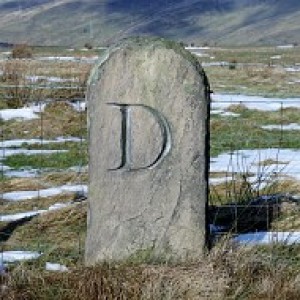Mountain Ewe - The Swaledale.
Picutre taken while bagging Doe Hill, 144 meters and a trig point near Hurst Green.
Well suited to the exposed regions in which they predominantly live, the Swaledales are hardy, thick coated, able bodied, and bold. The ewes make excellent mothers and are known for being able to rear lambs well, even in adverse conditions. They are of a medium build, with black faces, sometimes marked with white, and both males and females grow curled horns. Their coats are thick, straight, and coarse, and are of a uniform white colour. The wool they produce is durable and resilient, and is used for a number of applications. The sheep are also known for their tender and good-flavoured mutton.
Before the Swaledale, Scottish Blackface, and Rough Fell emerged as distinct breeds, their 17th-century forerunner was the Linton. It was named after the West Linton market in Peeblesshire, which specialised in selling the hardy Lintons for Scottish Highland and other upland farming. At the beginning of the 18th century, the market is recorded as having sold upwards of 9,000 sheep in a single day, numbers which surely helped establish the breed firmly in upland areas.
The Swaledale Sheep Breeders Association was founded in 1919 and originally consisted of farmers living within a seven mile radius of the Tan Hill Inn, on the North Yorkshire moors. The association is an active organisation point for Swaledale sales, shows, breeding, and products
- 0
- 0
- Panasonic DMC-TZ20
- 1/100
- f/5.1
- 22mm
- 100

Comments
Sign in or get an account to comment.


